
Playlists
 |
Playlist Playlists |
| Iconiche scene di ballo da film non
musicali - Prima parte Iconic dance scenes from non-musical movies - Part 1 |
|
| Nota: E' disponibile una
versione
pdf di questo Dossier. |
Note: A
pdf version
of this Dossier is available. |
|
Versione italiana English version |
|
| La nostra playlist si apre con il celeberrimo "Valzer del commiato", parte delle sequenze conclusive di "Il gattopardo", per il quale Nino Rota arrangiò un valzer inedito di Giuseppe Verdi, con la coreografia di Alberto Testa (anche maestro di danza per uno dei protagonisti, Burt Lancaster). Il valzer sottolinea, come tutto il film, la meticolosa ricostruzione storica operata da Luchino Visconti nel dipingere un ritratto amaro della nobiltà siciliana all'arrivo dei garibaldini, un'onda impetuosa che sembra travolgere una classe sociale al tramonto,anche se immobilismo e trasformismo coninueranno a dominare ("Se vogliamo che tutto rimanga com'è, bisogna che tutto cambi"). |
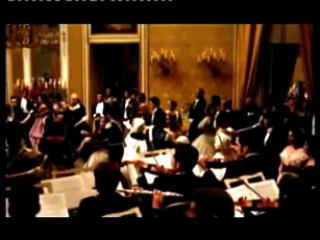 Il gattopardo (di/by Luchino Visconti, Italia/Italy - Francia/France 1963) |
Our playlist opens with the very famous "Farewell waltz", part of the final sequences of "Il gattopardo", for which Nino Rota arranged an unpublished waltz by Giuseppe Verdi, with the choreography by Alberto Testa (who was also the dance teacher for one of the protagonists, Burt Lancaster). The waltz underlines, like the whole film, the meticulous historical reconstruction carried out by Luchino Visconti in painting a bitter portrait of the Sicilian nobility at the arrival of Garibaldi's men, a rushing wave that seems to overwhelm a social class in decline, even if immobility and "shifting alliances" will continue to dominate ("If we want everything to stay the same, everything must change"). |
| Un giovanissimo e scatenato Ton Cruise, in camicia e calzini, si esibisce in una scena di ballo (sulle note di "Old Time Rock'n Roll" di Bob Seger) diventata il simbolo dell'intero film e forse anche di un'intera epoca. E' il culmine di un ritratto di una generazione di ragazzi intenti, non tanto a contestare i genitori, quando piuttosto ad eludere il loro controllo ma godendosi i loro beni (specialmente se di lusso, come in questo caso). Un ritratto anche di un'età, gli anni '80 del secolo scorso, che si ricorda spesso proprio per l'edonismo pervasivo e il "riflusso" giovanile dopo le contestazioni e i conflitti dei decenni immediatamente precedenti. |
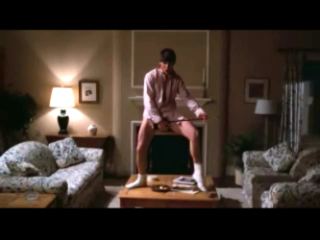 Risky business - Fuori i vecchi ... i figli ballano/Risky business (di/by Paul Brickman, USA 1983) |
A very young and wild Tom Cruise, in shirt and socks, performs a dance scene (to the tune of "Old Time Rock'n Roll" by Bob Seger) that has become the symbol of the entire film and perhaps even of an entire era. It is the culmination of a portrait of a generation of kids intent, not so much on challenging their parents, but rather on eluding their control but enjoying their possessions (especially if they belong to wealthy families, as in this case). Also, a portrait of an age, the '80s of last century, that is often remembered precisely for its pervasive hedonism and the youthful "reflux" after the protests and conflicts of the immediately preceding decades. |
| Un altro ballo sfrenato è quello di Jim Carrey, "maschera" estremamente flessibile nel volto come nel corpo, aiutato dalla sua mimica inconfondibile nonchè dagli effetti speciali, per l'epoca assolutamente innovativi, della Industrial Light & Magic di George Lucas. Sfruttando i magici poteri di un'antica maschera di legno, che fa emergere i lati nascosti della personalità di chi la indossa, un timido bancario si trasforma in una specie di "supereroe" ante-litteram, cinico quanto beffardo, incarnando sullo schermo il personaggio dei fumetti creato dalla Dark Horse Comics. |
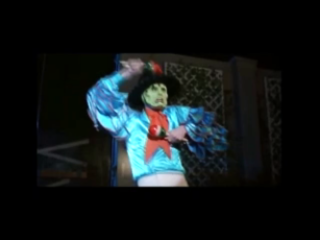 The mask - Da zero a mito/The mask (di/by Charles Russell, USA 1994) |
Another wild dance featuring Jim Carrey, an extremely flexible face and body "mask", aided by his unmistakable mimicry as well as by the special effects, quite innovative for the time, of George Lucas' Industrial Light & Magic. Exploiting the magical powers of an ancient wooden mask, which brings out the hidden sides of the personality of the person wearing it, a shy banker transforms himself into a sort of ante-litteram "superhero", as cynical as he is mocking, embodying on the screen the comic book character created by Dark Horse Comics. |
| L'avatar di Fellini nel suo capolavoro, ossia il regista in profonda crisi Guido, ricorda con nostalgia e tenerezza gli anni della sua adolescenza, quando con gli amici si ritrovava sulla spiaggia ad ammirare le forme prosperose di una vagabonda, Saraghina (interpretata da Edra Gale) mentre si esibiva in una danza coinvolgente quanto ammiccante. Il ricordo di Guido lo riporta alla scoperta della femminilità e della sessualità in quegli anni passati, segnati dall'innocenza della gioventù, quando ancora l'universo femminile poteva solleticare la dolce immaturità dei ragazzi, e ben prima che le donne diventassero per Guido la croce e la delizia degli anni a venire ... |
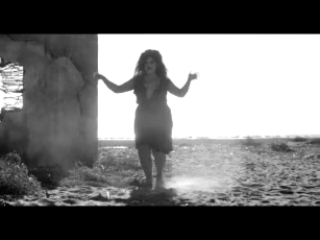 8 1/2 (di/by Federico Fellini, Italia/Italy 1963) |
As Fellini's avatar in his masterpiece, director Guido in deep crisis remembers with nostalgia and tenderness the years of his adolescence, when he would meet his friends on the beach to admire the buxom forms of a vagabond, Saraghina (played by Edra Gale) while she performed an engaging and suggestive dance. The memory of Guido takes him back to the discovery of femininity and sexuality in those past years, marked by the innocence of youth, when the feminine universe could still tickle the sweet immaturity of boys, and well before women became for Guido the cross and the delight of the years to come ... |
| Scent of a woman è il remake americano di un film di Dino Risi del 1974, interpretato da Vittorio Gassman (che per questa interpretazione vinse la Palma d'oro a Cannes). Il ruolo di Gassman passa ad Al Pacino (anche lui premiato con l'Oscar), nei panni di un ex-ufficiale cieco, accompagnato per un weekend da un liceale, che riuscirà a distorglierlo dai propositi suicidi e, nel contempo, a svelare l'umanità che si nasconde sotto la maschera del cinismo - come in questa scena in cui Pacino si ripromette di insegnare il tango ad una ragazza appena conosciuta ... |
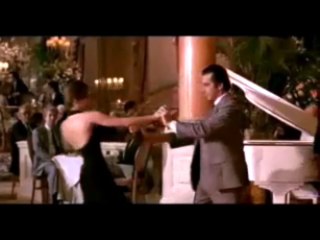 Scent of a woman - Profumo di donna/Scent of a woman (di/by Martin Brest, USA 1992) |
Scent of a Woman is the American remake of a 1974 film by Dino Risi, starring Vittorio Gassman (who won the Golden Palm at Cannes for this performance). Gassman's role goes to Al Pacino (also an Oscar winner), in the role of a blind ex-officer, accompanied for a weekend by a high school student, who manages to divert him from suicidal intentions and, at the same time, to reveal the humanity that hides under his mask of cynicism - as in this scene in which Pacino offers to teach tango to a girl he has just met ... |
| Il giovane John Travolta di La febbre del sabto sera e di Grease è stato solo uno dei riferimenti e delle ispirazioni per la scena di ballo che Quentin Tarantino, maestro nelle citazioni cinefile, ha orchestrato in Pulp Fiction per Travolta e Uma Thurman, che ballano sfrenatamente sulle note di "You never can tell" di Chuck Berry, un altro tassello in questo film che saccheggia a pieni mani dalla storia del cinema ma con l'inconfondibile (e per l'epoca assai originale) sguardo di questo regista innovativo quanto trasgressivo. |
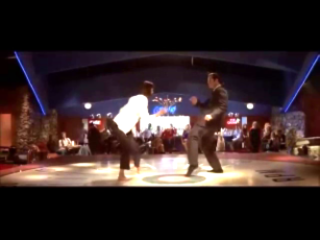 Pulp fiction (di/by Quentin Tarantino, USA 1994) |
The young John Travolta of Saturday Night Fever and Grease was just one of the references and inspirations for the dance scene that Quentin Tarantino, master of cinephile citations, orchestrated in Pulp Fiction for Travolta and Uma Thurman, who dance wildly to the tune of Chuck Berry's "You Never Can Tell" - another sequence in this film that plunders the history of cinema with both hands but with the unmistakable (and for the time very original) gaze of this innovative and transgressive director. |
| Chi saprebbe riconoscere il Tom Cruise, il ragazzotto che in Risky business ballava un rock indiavolato, nel personaggio di un produttore cinematografico di mezza età, sovrappeso, barbuto, stempiato e sudaticcio, che balla sui titoli di coda di Tropic thunder? Il regista Ben Stiller si deve essere divertito a sovvertire l'immagine del divo belloccio Tom Cruise in questo film, satira sarcastica del mondo hollywoodiano ... |
 Tropic thunder (di/by Ben Stiller, USA-Germania/Germany 2008) |
Who would recognize Tom Cruise, the young boy who danced a devilish rock in Risky Business, in the character of a middle-aged, overweight, bearded, balding and sweaty film producer, who dances during the closing credits of Tropic Thunder? Director Ben Stiller must have had fun subverting the image of the handsome star Tom Cruise in this film, a sarcastic satire of the Hollywood world ... |
| La favola di La bella e la bestia, già più volte portata sugli schermi, è l'oggetto di questa versione animata della Disney. L'amore trionfa (con un bacio, Bella romperà l'incantesimo e trasformerà il mostro in un bel principe), in un film che mette al centro un rapporto sentimentale quasi erotico, abbastanza inusuale per le produzioni disneyane, e che nella scena del ballo trova una dei suoi momenti più coinvolgenti (anche, e forse soprattutto, per i riuscitissimi personaggi di contorno). |
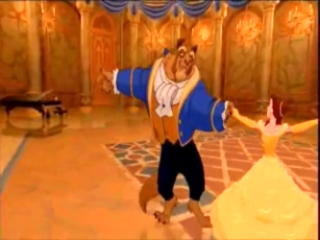 La bella e la bestia/Beauty and the beast (di/by Gary Trousdale e/and Kirk Wise, USA 1991) |
The tale of Beauty and the Beast, already brought to the screen several times, is the subject of this animated version by Disney. Love triumphs (with a kiss, Beauty will break the spell and transform the monster into a handsome prince), in a film that focuses on an almost erotic sentimental relationship, quite unusual for Disney productions, and that in the ball scene finds one of its most engaging moments (also, and perhaps above all, for the very successful supporting characters). |
| Ancora un divo che si confronta con il ballo come liberazione dai freni inibitori dettati dagli asfissianti ruoli sociali: il Primo Ministro inglese David (Hugh Grant) cerca di sfuggire dalla gabbia delle convenzioni lanciandosi in un ballo buffo quanto libertario, sulle note di "Jump" delle Pointess Sisters. Ma la tato agognata libertà è di breve durata: sorpreso dalla sua segretaria, David deve tornare subito entro i limiti imposti dalla sua "persona" pubblica ... |
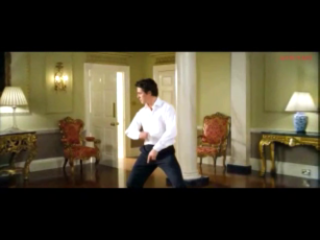 Love actually - L'amore davvero/Love actually (di/by Richard Curtis, GB 2003) |
Another star who uses dance as a liberation from the inhibitions dictated by suffocating social roles: the English Prime Minister David (Hugh Grant) tries to escape from the cage of convention by throwing himself into a funny and libertarian dance, to the notes of "Jump" by the Pointess Sisters. But the longed-for freedom is short-lived: surprised by his secretary, David must immediately return within the limits imposed by his public "persona" ... |
| Cary Grant e Ingrid Bergman era già stati protagonisti di un famosissimo film di Hitchcock del 1946 (Notorius- L'amante perduta), e una dozzina d'anni dopo si ritrovano ancora insieme nel film di uno dei massimi registi di musical hollywoodiani, Stanley Donen. Grant ha qui l'opportunità di ribadire la sua classica immagine, tra l'ironico e il divertito, di uomo un po' buffo ma affascinante, sempre pronto a dare il massimo proprio nei toni della commedia brillante. Come in questo ballo scatenato, da far invidia a Tom Cruise e John Travolta ... (e Grant qui aveva già 54 anni). |
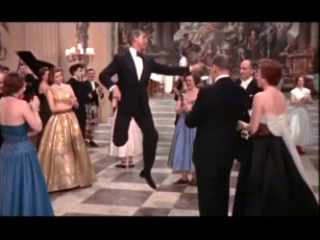 Indiscreto/Indiscreet (di/by Stanley Donen, USA 1958) |
Cary Grant and Ingrid Bergman had already been the protagonists of a very famous Hitchcock film from 1946 (Notorious), and a dozen years later they find themselves together again in the film by one of the greatest directors of Hollywood musicals, Stanley Donen. Grant has here the opportunity to reaffirm his classic image, between ironic and amused, of a man who is a little funny but charming, always ready to give his best in the tones of brilliant comedy. As in this wild dance, which Tom Cruise and John Travolta would envy... (and Grant here was already 54 years old). |
| Tra le varie star del cinema che si sono cimentate in esibizioni danzerecce ricordiamo pure Antonio Banderas, che in Ti a di ballare? interpreta un insegnante americano, ma di origini franco-ispaniche, che cerca, a suon di danza, di far uscire dall'emarginazione i ragazzi afro-americani di un doposcuola di Manhattan. Tra un tango e una rumba, riuscirà a farli partecipare ad una gara apparentemente fuori dalla loro portata ... |
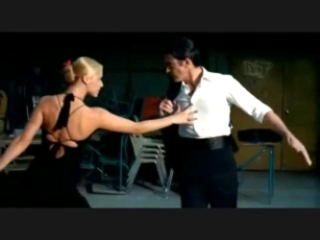 Ti va di ballare? - Take the lead/Take the lead (di/by Liz Friedlander, USA 2005) |
Among the various movie stars who have tried their hand at dance performances, we can also quote Antonio Banderas, who in Take the lead plays an American teacher, but of French-Hispanic origins, who tries, through dance, to fight the marginalization of African-American children of an after-school program in Manhattan. Between a tango and a rumba, he will manage to get them to take part in a competition apparently out of their reach ... |
| Una scena di ballo in uno dei film-chiave della nouvelle vague francese degli anni '60 del secolo scorso? Jean-Luc Godard non aveva confini nei suoi ritratti di personaggi e situazioni, ed anche una scena di ballo fra i tre protagonisti (Arthur e Frantz, entrambi innamorati di Odile) di questo film può aprire spiragli di significato appena celati sotto una certa atmosfera: i tre, incuranti degli avventori del Café de Vincennes in cui si trovano, si lanciano a ballare il "madison" (ballo diventato di moda dopo il "twist"). Ma è la natura stessa di questo ballo a svelare il senso della scena: come molti altri balli dell'epoca, il "madison" è di fatto un ballo individuale, in cui ci si mette in fila a ballare con gli altri ma ognuno balla per sè, in sincrono eppure isolati - una metafora abbastanza evidente della solitudine che, sotto le apparenze della socialità, in realtà definisce la condizione esistenziale degli individui. |
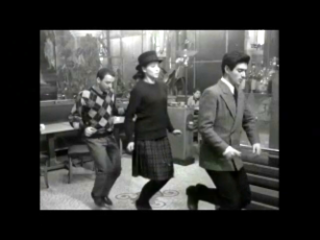 Bande à part (di/by Jean-Luc Godard, Francia/France 1964) |
A dance scene in one of the key films of the French New Wave of the 1960s? Jean-Luc Godard had no boundaries in his portrayals of characters and situations, and even a dance scene between the three protagonists (Arthur and Frantz, both in love with Odile) of this film can open glimpses of meaning barely hidden under a certain atmosphere: the three, heedless of the customers of the Café de Vincennes where they are, launch into dancing the "madison" (a dance that became fashionable after the "twist"). But it is the very nature of this dance that reveals the meaning of the scene: like many other dances of the time, the "madison" is in fact an individual dance, in which people line up to dance with others but each dances for himself, in sync yet isolated - a fairly obvious metaphor for the loneliness that, under the appearance of sociality, actually defines the existential condition of individuals. |
| Ancora Antonio Banderas in un ennesima versione del personaggio di Zorro, a fianco di Catherine Zeta-Jones e, a sorpresa, Anthony Hospkins, vecchio Zorro che istruisce un giovane a seguirne le orme. Due Zorri al prezzo di uno, verrebbe da dire - ma l'esibizione di ballo, tra il romantico e l'erotico, continua ad avere un suo fascino ... |
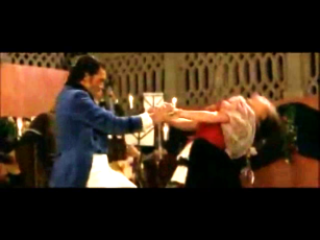 La maschera di Zorro/The mask of Zorro (di/by Martin Campbell, USA 1998) |
Antonio Banderas again in yet another version of the character of Zorro, alongside Catherine Zeta-Jones and, surprisingly, Anthony Hospkins, an old Zorro who teaches a young man to follow in his footsteps. Two Zorros for the price of one, one might say - but the dance performance, somewhere between romantic and erotic, continues to have its own charm ... |
| Il mondo del cinema classico dei primi anni '50 è ricostruito con ironia mista ad affetto in Ave, Cesare!, dove i due registi-sceneggiatori hanno modo di mettere in scena, tra l'altro, i famosi balletti dell'età d'oro di Hollywood, come in questo esempio, dove l'omaggio a Gene Kelly è evidente. Channing Tatum, star a suo agio soprattuto in film d'azione, partecipa divertito e senza sfigurare in queso godibile balletto di marinai scatenati. |
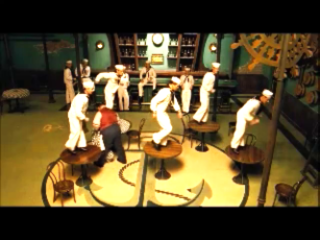 Ave, Cesare!/Hail Caesar! (di/by Joel e/and Ethan Coen, USA/GB 2016) |
The world of classic cinema of the early 50s is reconstructed with irony mixed with affection in Hail, Caesar!, where the two directors-screenwriters have the opportunity to stage, among other things, the famous ballets of the golden age of Hollywood, as in this example, where the homage to Gene Kelly is evident. Channing Tatum, a star at ease especially in action films, features in this enjoyable ballet of wild sailors. |
| Le classiche
e magiche atmosfere del cinema muto al suo tramonto sono riproposte in
The artist, film anch'esso "muto", girato in bianco e nero, con
un formato "quadrato", didascalie per spiegare i dialoghi e la
recitazione manierata dei divi di quel cinema. Un po' Cantando sotto
la pioggia, un po' Viale del tramonto, The artist
vince la scommessa di dipingere il ritratto di un cinema e di attori in
un momento chiave dela storia della settima arte, quel 1927 che segnò
l'inizio del passaggio al sonoro. Passaggio che fece le sue vittime: il
protagonista del film, il divo Valentine (Jean Dujardin) apre le porte
del successo ad una ballerina, Peppy (Bérénice Bejo), ma, non credendo
nel sonoro, investirà tutto in un film muto che sarà un totale
fallimento. Ma la presenza di Peppy forse lo salverà, come in questa
scena finale, in cui i due, sulle orme di Fred Astaire e Ginger Rogers,
si lanciano in un "tip-tap" travolgente. The artist vinse la
sfida di un film senza parole girato nel 2011, con la Palma d'oro a
Cannes per il protagonista e ben cinque Oscar. Vai alla Seconda parte |
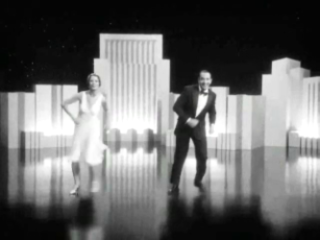 The artist (di/by Michel Hazanavicius, Francia/France-Belgio/Belgium 2011) |
The classic and magical
atmospheres of silent cinema at its sunset are, once again, the
background to The
Artist, itself a "silent" film, shot in black and white, with a "square"
format, captions to explain the dialogues and the mannered acting of the
stars of that cinema. A bit like Singin' in the Rain, a bit
like Sunset Boulevard, The Artist wins the challenge of painting the portrait of cinema and
actors in a key moment in the history of the seventh art, - 1927,
which marked the beginning of the transition to sound. A transition that
had its victims: the protagonist of the film, the star Valentine (Jean
Dujardin) opens the doors of success to a dancer, Peppy (Bérénice Bejo),
but, not believing in sound, invests all his fortunes in a silent film
that will be a total failure. But Peppy's presence may eventually save him, as in
this final scene, where the two, following in the footsteps of Fred
Astaire and Ginger Rogers, launch into an overwhelming "tip-tap". The
artist won the challenge of a film without words shot in 2011, and
was awarded the
Golden Palm at Cannes for the protagonist and five Oscars. Go to Part 2 |